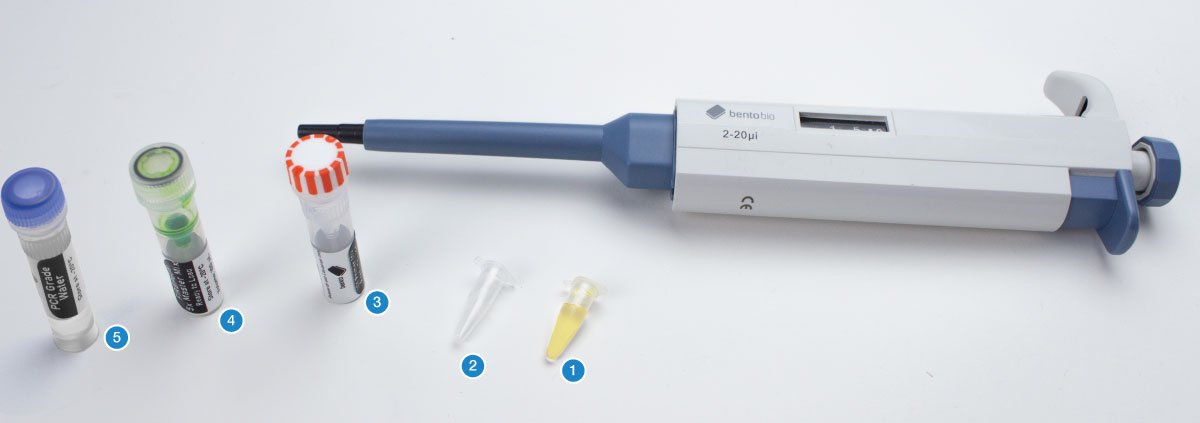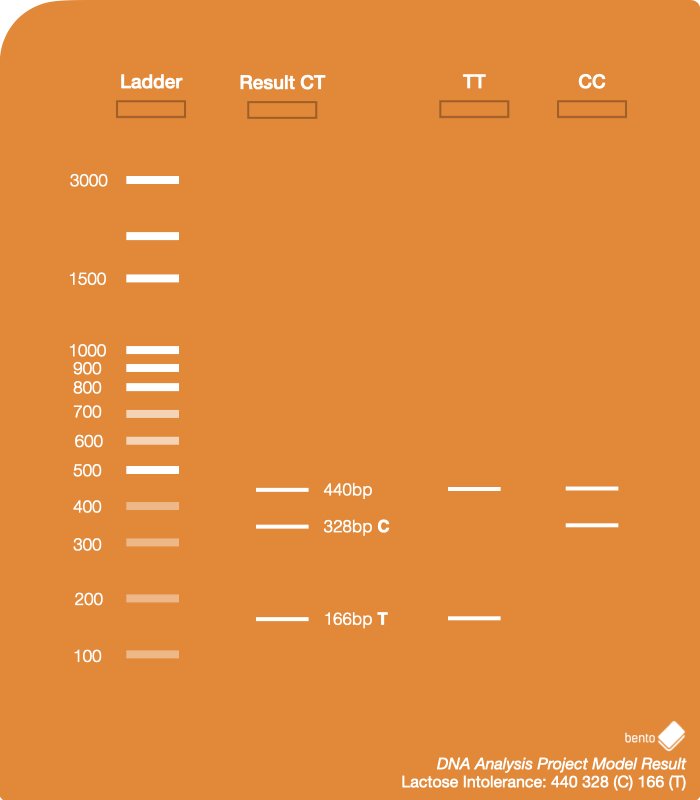Overview
MCM6 gene variations
You will explore two forms of the MCM6 gene: The T allele and the C allele.
T allele is associated with turning on the LCT gene, which means lactase will is produced.
C allele is associated with switching off the LCT gene in adulthood, which means lactase will not be made.
What are the possible results for this experiment?
There are three possible results, since the gene has two variations, and two occurrences of the gene exist – one from each chromosome:
- Homozygous dominant: Both copies of the gene contain the T allele, which means the person can digest milk.
- Homozygous recessive: Both copies of the gene contain the C allele, which means the person is likely to be lactose intolerant as an adult.
- Heterozygous: One copy of the gene contain the T allele, and the other is C allele. The T allele is dominant, so the person likely to be able to digest milk as an adult.


